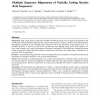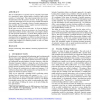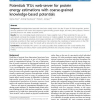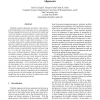122 search results - page 20 / 25 » Protein Fold Recognition using Residue-Based Alignments of S... |
BMCBI
2005
13 years 7 months ago
2005
Background: High quality sequence alignments of RNA and DNA sequences are an important prerequisite for the comparative analysis of genomic sequence data. Nucleic acid sequences, ...
KDD
2002
ACM
14 years 8 months ago
2002
ACM
The 3D conformation of a protein may be compactly represented in a symmetrical, square, boolean matrix of pairwise, inter-residue contacts, or "contact map". The contact...
BMCBI
2010
13 years 7 months ago
2010
Background: Knowledge-based potentials have been widely used in the last 20 years for fold recognition, protein structure prediction from amino acid sequence, ligand binding, prot...
SSDBM
2006
IEEE
14 years 1 months ago
2006
IEEE
Multiple sequence alignment represents a class of powerful bioinformatics tools with many uses in computational biology ranging from discovery of characteristic motifs and conserv...
BMCBI
2005
13 years 7 months ago
2005
Background: Pairwise stochastic context-free grammars (Pair SCFGs) are powerful tools for evolutionary analysis of RNA, including simultaneous RNA sequence alignment and secondary...




